|
Administrative center of a local dynasty
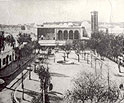 It was only starting from the XIIth century that Tunis was able to set up itself as first chief place of a local principality, that of Bani Khorassan, then in capital of the province Ifriqiyenne of the caliphate almohade of Marrakesh (1160) J.C.-1229J.C.) and finally capital of the realm of the dynasty of Bani Hafs (Hafsides) of 1229 .J.C. In 1574 J.C. With Sicily from which it is separated only by a corridor 140 km wide, it controlled the passage between the western Mediterranean Sea and the oriental Mediterranean Sea, the considerable advantage from the point of view of the international trade. It was only starting from the XIIth century that Tunis was able to set up itself as first chief place of a local principality, that of Bani Khorassan, then in capital of the province Ifriqiyenne of the caliphate almohade of Marrakesh (1160) J.C.-1229J.C.) and finally capital of the realm of the dynasty of Bani Hafs (Hafsides) of 1229 .J.C. In 1574 J.C. With Sicily from which it is separated only by a corridor 140 km wide, it controlled the passage between the western Mediterranean Sea and the oriental Mediterranean Sea, the considerable advantage from the point of view of the international trade.
The prosperous Italian republics in that period: Pise, Genoa, Florence, Venice, the city of Marseille and certain Spanish counters such as Barcelona, maintain with it an important traffic of luxury items intended to satisfy the needs of a court and mercantile.
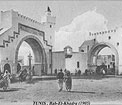 Around the big mosque spread out numerous souks where was made the trade of precious foodstuffs: silk fabrics, flavors, books, tanning.…. Whereas " less noble " products, more polluting or produced by the soil were made or sold outside the doors, in the fact, we could call it already suburbs: Tanners, Alfatiers ( halfaouine ), Tabbanine (for the hay), Rahbat al-Ghanam (square of sheeps), Morkadh (square of horses) etc.… This prosperity which we suspected through the narratives of the Arabic or European travelers such as the Egyptian Abdelbasit Ibn Khalil or the Andalusian Al-Abdary or Brugeois Adorne.... Around the big mosque spread out numerous souks where was made the trade of precious foodstuffs: silk fabrics, flavors, books, tanning.…. Whereas " less noble " products, more polluting or produced by the soil were made or sold outside the doors, in the fact, we could call it already suburbs: Tanners, Alfatiers ( halfaouine ), Tabbanine (for the hay), Rahbat al-Ghanam (square of sheeps), Morkadh (square of horses) etc.… This prosperity which we suspected through the narratives of the Arabic or European travelers such as the Egyptian Abdelbasit Ibn Khalil or the Andalusian Al-Abdary or Brugeois Adorne....
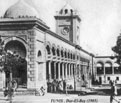 Capital of a realm Capital of a realm
Tunis was supposed to be under Hafsides for a big city (in XVè century, it’s population is about 100.000 inhabitants), pleasant, well enough defended by ramparts and citadel, the kasbah, where lived the sultan when he was not in one of his outer parks of Short tabia or of Ahou Fihr.
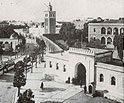 Down from twelve stairs of it's big mosque, Ezzitouna, we could see the arsenal of Hassane as well as the port and the lake shores of which were not also remote from doors of the city as nowadays and more exactly from the oriental door: Bab Al-Bahr (Door of the sea, Bab Al-Jazira in the South, Bab Souika in the North, Bab Carthagenna in the Northeast and Bab Kadhra on the West, constituted four other known openings. Down from twelve stairs of it's big mosque, Ezzitouna, we could see the arsenal of Hassane as well as the port and the lake shores of which were not also remote from doors of the city as nowadays and more exactly from the oriental door: Bab Al-Bahr (Door of the sea, Bab Al-Jazira in the South, Bab Souika in the North, Bab Carthagenna in the Northeast and Bab Kadhra on the West, constituted four other known openings.
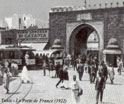 Of eminent scholars of whom Ali Ibn-Ziyad had, since the XIè-XIIè centuries, professed in its big mosque, popularizing in Ifriqiya the rite malikite, even before Souhnoun was made door banner. The known unprecedented architectural activity made of the khorassanide town, a capital deserving of big cities of time(period) and especially deserving of the dynasty of Hafsides which the sultan Abou Abdallâh Al-Mustansir set up. Of eminent scholars of whom Ali Ibn-Ziyad had, since the XIè-XIIè centuries, professed in its big mosque, popularizing in Ifriqiya the rite malikite, even before Souhnoun was made door banner. The known unprecedented architectural activity made of the khorassanide town, a capital deserving of big cities of time(period) and especially deserving of the dynasty of Hafsides which the sultan Abou Abdallâh Al-Mustansir set up.
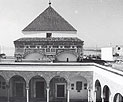 Religious and intellectual seat Religious and intellectual seat
Political and economic capital of the big realm of Hafsides (Ifriqiya, besides current Tunisia, grouped the provinces of Tripoli in the East, Candle and Constantine on the West), Tunis was also a big religious and cultural seat.
Five new big mosques to Khotba came to be added to Ezzitouna from the XIIIè century (mosque of Kasbah on the West, mosque Abi-Mohammad in the North, the mosque barrani Bab Al-Jazira in the South, the mosque Taoufik in the Southwest, the mosque Bab al-Bahr).
Médersas (schools, at the same time for the housing and the education of the students the first one of North Africa of which is Chammaiya built by the founder of the dynasty Hafside at the same time as the mosque of Kasbah.
By 1230 J.C.), zaouïas (mausoleums, places of grave of holy characters and popular worship), kouttabs ( Koranic schools), public fountains, hammams and other pious foundations or public interest testifies of the considerable development of the civilization as well as the constant renewal of the architectural style.
The intense occidental Current in the XIIIè century, thanks to the massive arrival of the Andalusians chased away by Spain, was strongly competed, from the XVè century, by the Egyptian contribution.
Nowadays , we still can admire monuments typically almohades or andalusian as the minaret and the dome of the mosque of Kasbah (XIIIè century), the zaouïa of Sidi Quasim al-Jalizi (xve century) or of net oriental influence as the midha of the sultan (XVè century) or syncrétique style such as the médersa Chammaiya (XIIIè century) or Montasirya (XVè century) or the mosque of Al-Hawa (XIIIè century) built under the instructions of Atf, the wife of Abou Zakariya, founder of the hafside dynasty.
|